The evolution of smartphones. Part 1: 1994 - 2010
Back in 2013, I published an article Old advertising of cell phones and smartphones (from the 1980s to the end of the 2000s) , where you can watch the brightest phones from the 1980s.
But this time I want to track precisely smartphones - communicators, smart phones, phablets, shades and other devices of the same type, the mere definition of the name of which caused fights among geeks. And so you need to start with IBM Simon, released more than 20 years ago . Then we move on to Symbian devices, the first iPhone and HTC’s first Android smartphone, recall Nokia devices and end the journey with the latest gadgets introduced in 2016.
In the comments, please share your memories and provide links to your own reviews.
If the article lacks a specific model, please write about it in the comments with the image. So we will make the “Evolution” more complete.
IBM Simon had a large 4.7-inch monochrome display with a resolution of 160x293 pixels, and weighed a pound without taking into account the docking station. This futuristic for that time mixture of a computer and a phone without a keyboard, but with a touch screen, combined a mobile phone, pager, organizer, mail, alarm clock. The gadget worked on a 16-bit Vadem VG-230 16 MHz processor. By the way, there was a whole megabyte of RAM. Want to see what's inside? Read analysis on Habré , and in a post on Geektimes read how pictures can be uploaded to this gadget.

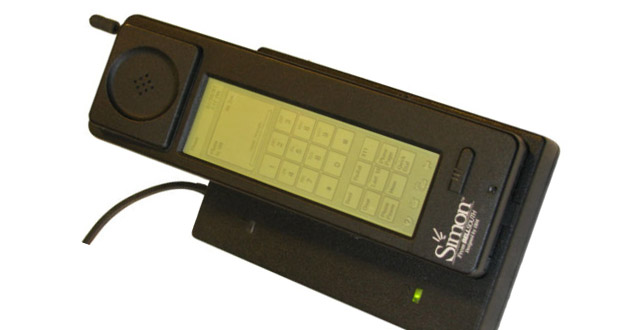
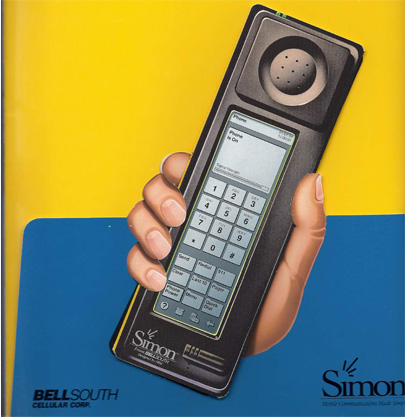
The film "Network", 1995.
Could you not have dreamed about this device from Nokia in 1996? He had a keyboard and two monochrome displays - an internal 4.5-inch 640x200 pixels, external - 50x38. Weighed the gadget 397 grams - you could fight off anyone.
For the first time, the device was called the “Communicator."
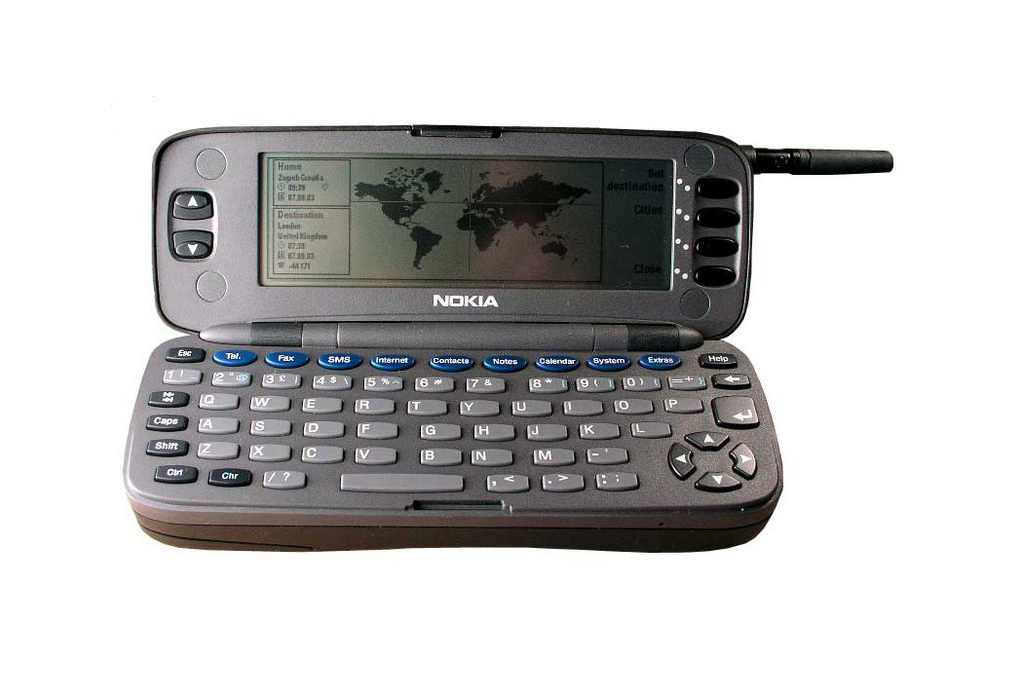
We turn to the first device, which was called "smart phone" as part of the manufacturer’s advertising campaign. This is Ericsson R380, another gadget with a large 3.7-inch touch screen and a Symbian operating system. Prior to this, Ericsson made many handheld computers without the ability to make calls and phones without the ability to use them as computers. “We call it a smartphone,” the advertisement says.
The device was introduced to the world in December 1999, and in 2000 began to sell.
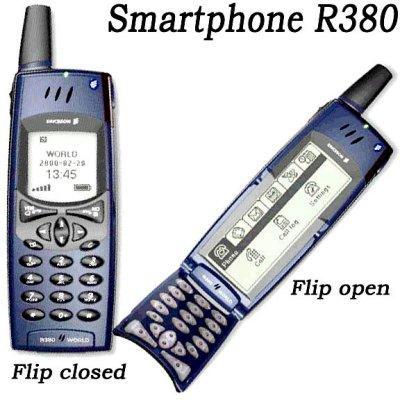
The history of Blackberry began in 1984 when a student at the University of Waterloo, Mike Lazaridis, registered RIM - Research In Motion. The company began by designing devices for wireless data transmission, and from the 1990s borrowed text messaging technology from paging networks from Ericsson and RAM Mobile Data, after which it released a pager with a QWERTY keyboard that allows you to send messages. Further, most of the Blackberry devices looked just like that.
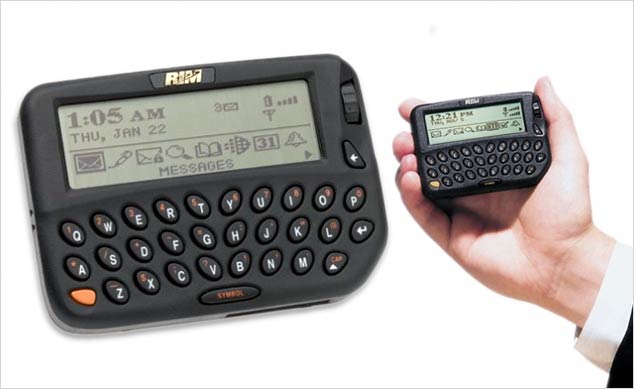
The first Blackberry smartphone appeared in 2002. The BlackBerry 5810 did not have a speaker and a microphone; a headset was needed for talking. But there was a keyboard.
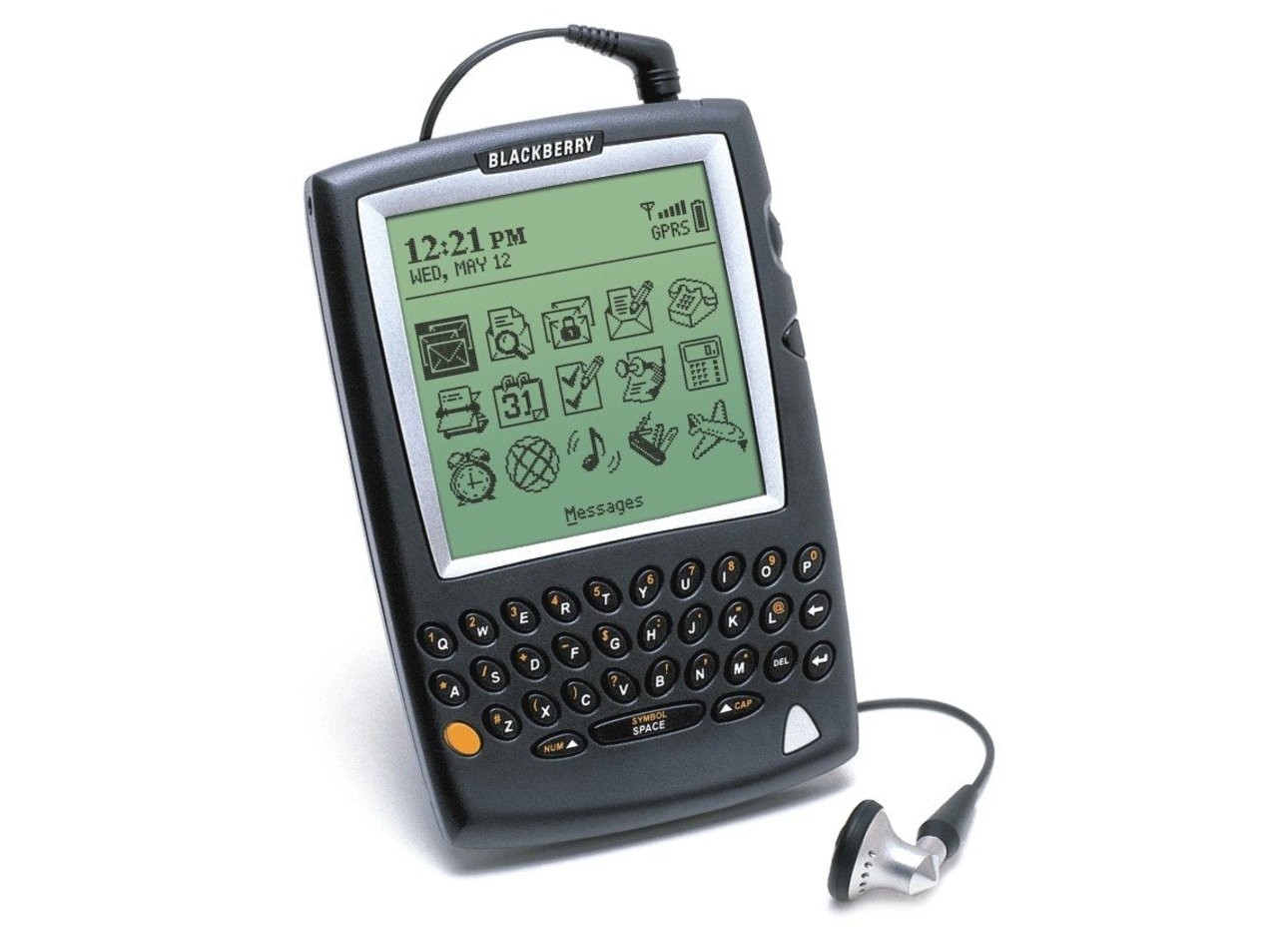
Nokia 9210 continued the line of “communicators” from the Finnish company. We released the gadget on Symbian OS 6.0 in 2002, but I still remember how I wanted to get one. And I don’t know what would I do with him?
Nokia 9210 boasted a color screen of 640x200 pixels, 8 MB of RAM and 14 MB of internal memory. He did not work long then - 10 hours. The review is here .
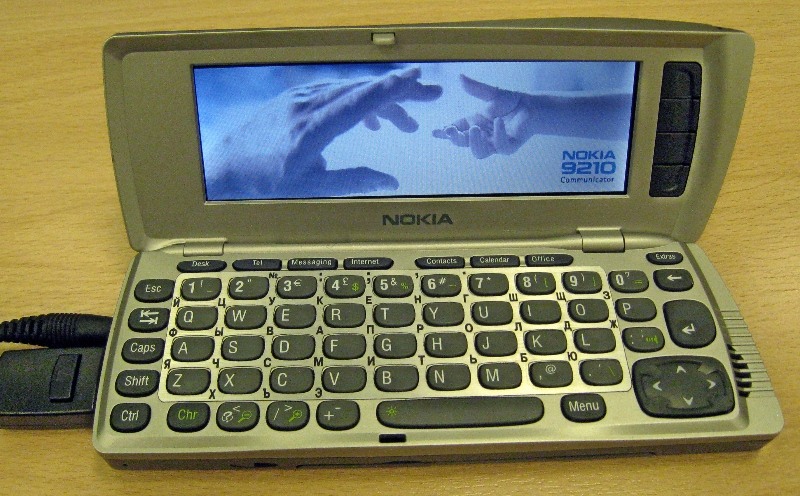

Nokia 7650, announced on June 26, 2002, was the first smartphone on Symbian OS - before that there were only communicators. Here you can start arguing about what should be called.
The device in the media dubbed the "camera phone" for the built-in camera, and it generally became the first device from Nokia with a camera.
The processor is a 32-bit RISC 104 MHz. Memory - 4 megabytes, of which only 3.4 MB was available to the user.

In 2002, Sony Ericsson introduced the P800 smartphone with UIQ 2.0 interface, made on the basis of Symbian OS v 7.0.

Since April 2002, HTC has been manufacturing handheld personal computers running Windows Mobile. The first was HTC Wallaby with an Intel StrongARM processor of 206 MHz, 32 MB of RAM and the same amount of flash memory, support for MMC and SD cards, a 3.5-inch TFT-display with a resolution of 240x320 pixels ... Operating system - Microsoft Pocket PC 2002 Phone Edition.
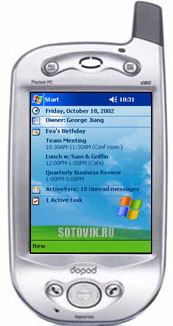
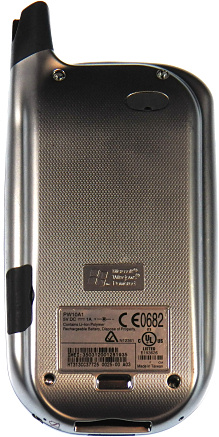
A year later, HTC Falcon appeared.
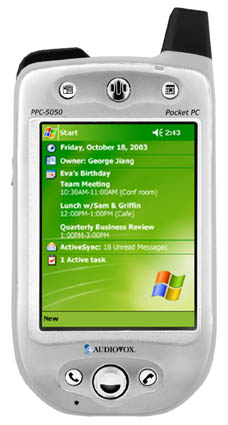 '
'
And in 2004 - HTC Himalaya. This handheld no longer had a huge antenna.
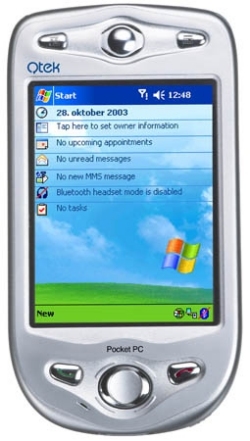
In February 2003, the German company Siemens announced the entry into the smartphone market with the original Siemens SX1 on Symbian OS. The number keys are located on both sides of the case. At the time sales began in December 2003, the gadget cost $ 750, but fell in price to 250 in two years.
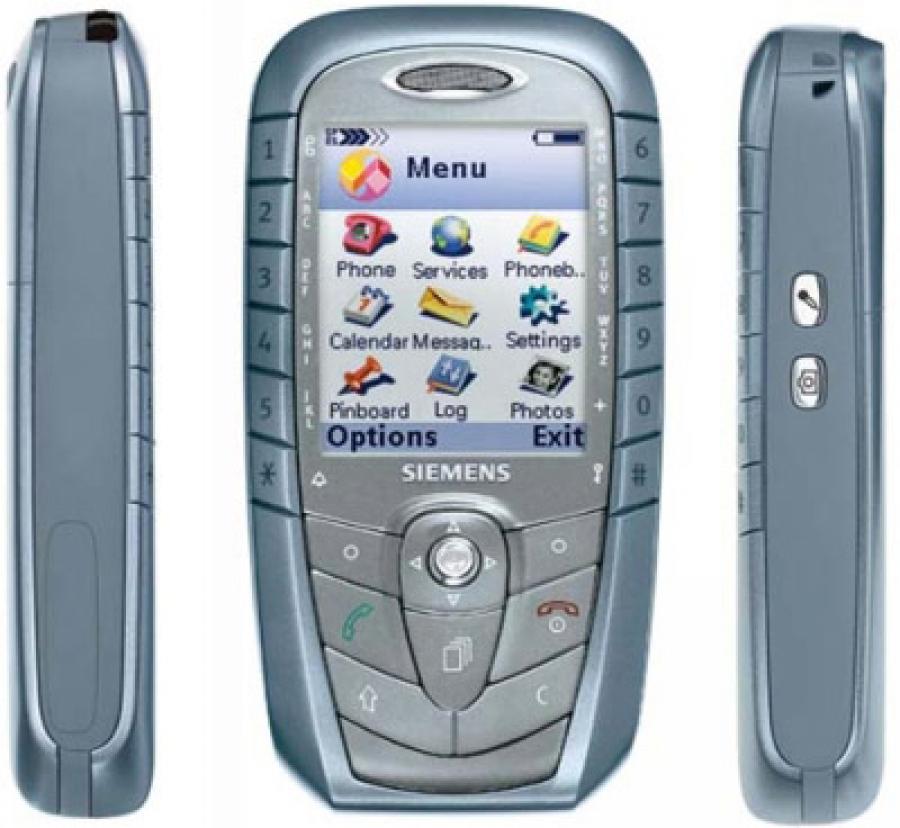
At the 2005 Hanover exhibition, Siemens demonstrated a new smartphone concept - with a laser keyboard.

In 2004, Sony Ericsson P910 came out. The gadget received a QWERTY keyboard on the back of the flip. At the same time, you can remove the flip from the gadget in general to get the classic version of the smartphone with a minimum of buttons. The Symbian model is based on the 156 MHz ARM9 processor, has 64 megabytes of RAM and supports Memory Stick PRO Duo up to 2 gigabytes.
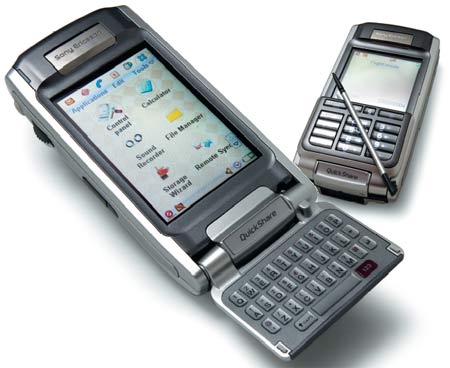
HTC Blueangel went on sale in October 2004. It was made under various brands, including Siemens. The diagonal of the display is 3.5 inches, the memory is 96 MB built-in and 128 MB operational. The device worked on Windows Mobile 2003SE. Processor - Intel PXA263 400 MHz. The gadget is made in the slider form factor with a full-sized keyboard.
Later there were Alpine, Gemini, Apache, Galaxy, Wizard, Prophet, Charmer, Hermes, Trinity and many other devices on the operating system from Microsoft.
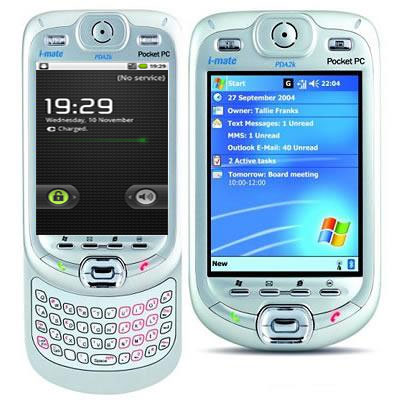
The BlackBerry 7210 was the first Blackberry smartphone with a color display. The gadget had 2 megabytes of internal memory and a 960 mAh battery.
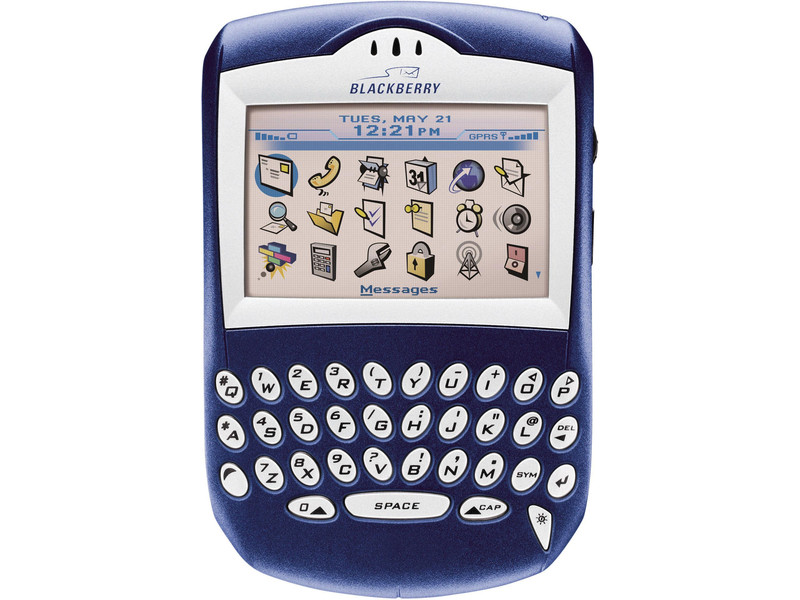
The HTC Qtek S100 smartphone has been sold since 2005 under various names - 2 Xda II Mini (Asia), O2 Xda mini (Germany), T-Mobile MDA compact, i-mate JAM, Vodafone VPA Compact, Dopod 818, Krome Spy, and Orange SPV M500. This device on Windows Mobile 2003 had 64 MB of internal and the same amount of RAM, an SDIO / MMC card slot, a 1.3 megapixel camera, a 2.8-inch screen with a resolution of 240x320 pixels.
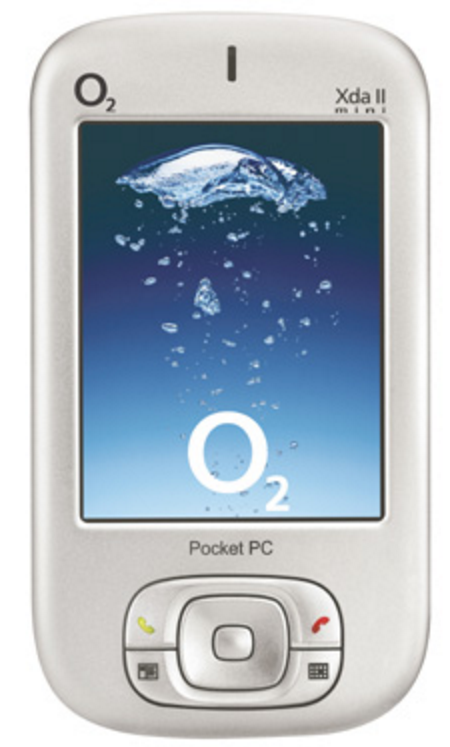
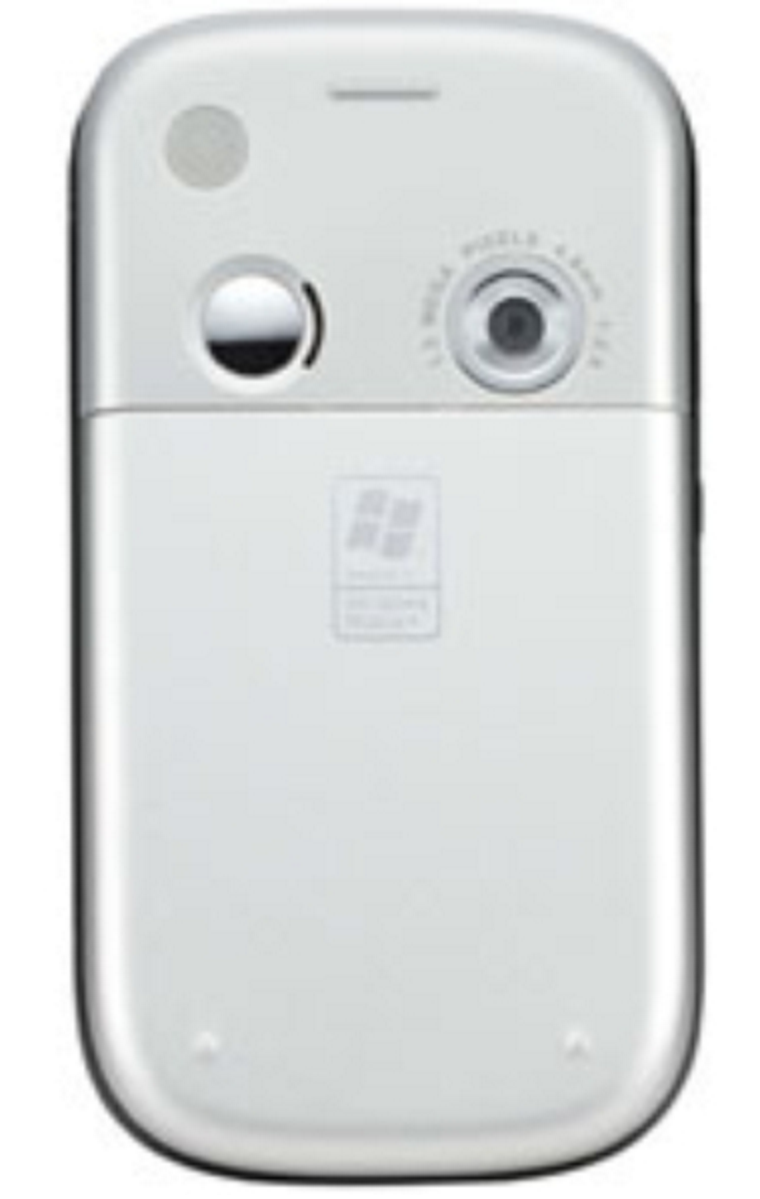
In 1998, Nokia, Psion, Ericsson and Motorola merged to develop Symbian OS. Later, Sony Ericsson, Siemens, Panasonic, Fujitsu, Samsung, Sony, Sharp and Sanyo joined the consortium. The Symbian platform was the most popular for smartphones in the world in the mid-2000s. Read about Symbian Sunrise and Sunset here .
Lenovo's first gadget on Symbian was the Lenovo P930 in 2005. The device supported GPRS, had a color display with a stylus input and a 1-megapixel camera. The memory could be expanded using SD / MMC memory cards. The smartphone had a GPS navigator, an MP3 player, and it was possible to put JAVA applications on it.
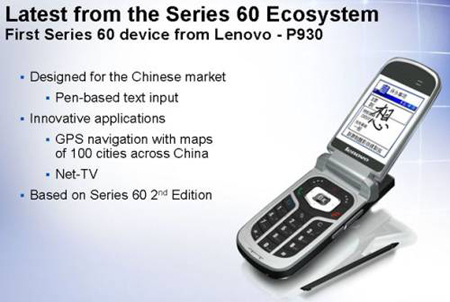
The Lenovo ET980 smartphone on Windows Mobile 5.0 received an Intel PXA270 312 MHz processor. The overlay on the smartphone added ordinary buttons to it. The release of the gadget began in 2005.
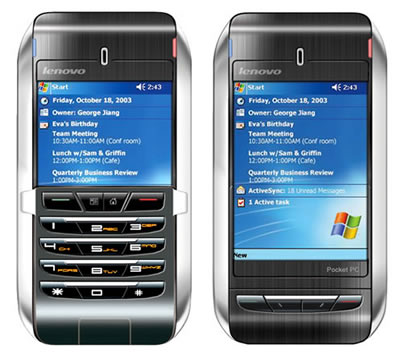
In July 2005, Google acquired Android Inc., in November 2007, announced the creation of the Open Handset Alliance and announced the open Android mobile platform. In the same month, the alliance presents the first version of the package for developers. In 2008, the first version of the operating system was released.
In September 2006, HTC released the P3600 on Windows Mobile - a 150-gram communicator with a 2.8-inch TFT-display and a resolution of 240x320, two cameras - the main 2 MP and front-facing, 64 MB RAM and 128 MB of internal memory. Samsung for the smartphone produced a processor.
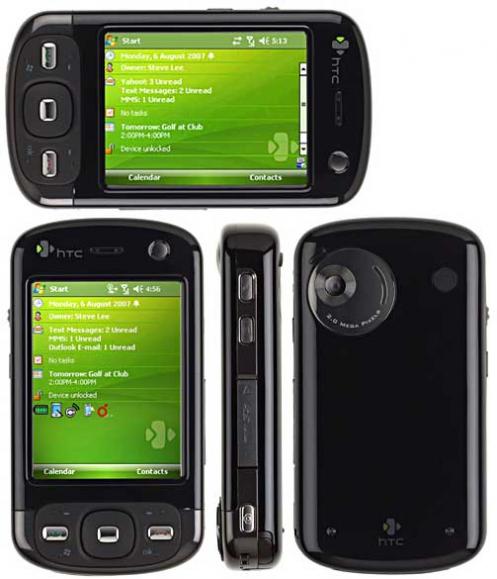
In March 2007, the Finns released the Nokia N95. The user of Habr called him the King of smartphones , and in the first comment another user expressed his “fi”: “there is no qwerty keyboard, so I won’t even look in his direction.”
The form factor is a brick slider. Display - 2.6-inch 240x320 pixels. The processor with a clock frequency of 330 MHz. Internal memory 160 MB. The camera is 5 megapixel with autofocus, electronic stabilizer and built-in flash. The gadget worked on Symbian OS v9.2.

In May 2007, it became known that sales of the Apple iPhone would begin in June. Steve Jobs tried to squeeze the most out of his subordinates so that the device was close to ideal. This has been written more than one book.
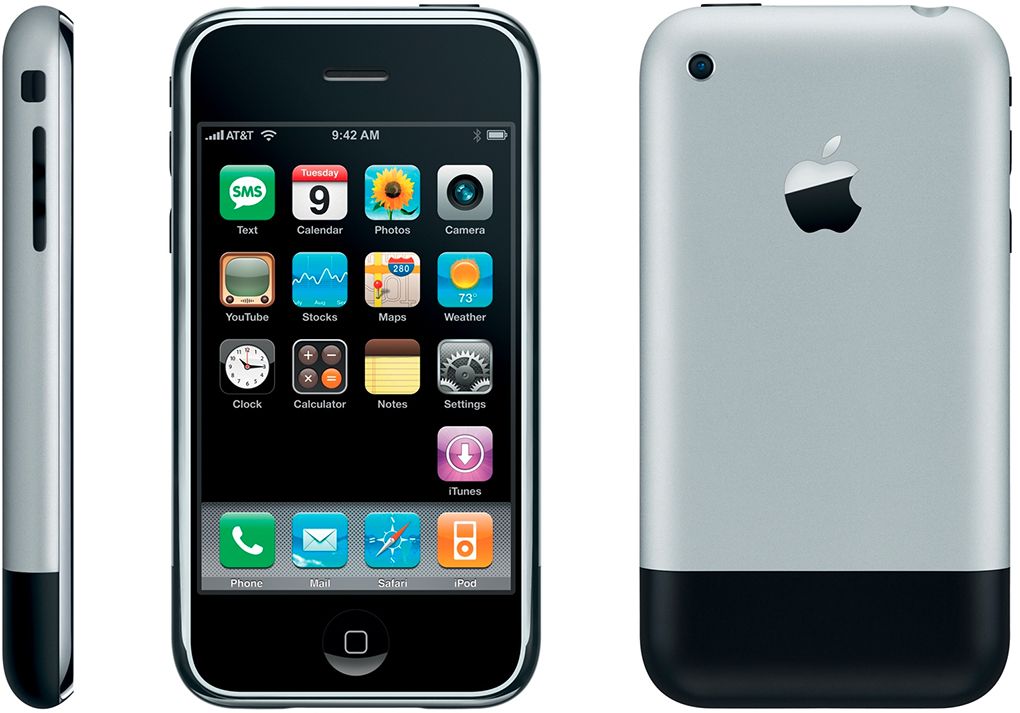

The HTC S740 was launched in 2008. It is based on the Qualcomm MSM7225 528 MHz processor, had 256 megabytes of RAM and internal memory, supported microSD. The screen diagonal is 2.4 inches, and the resolution is 320x240 pixels.
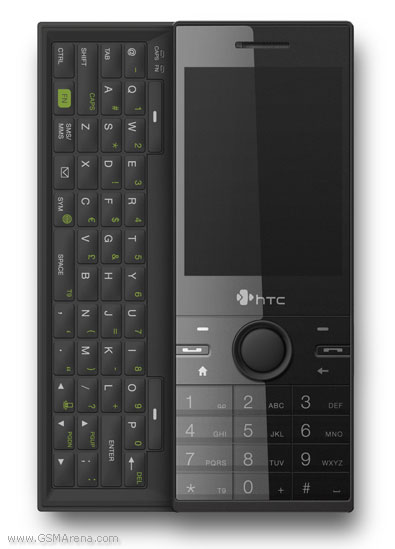
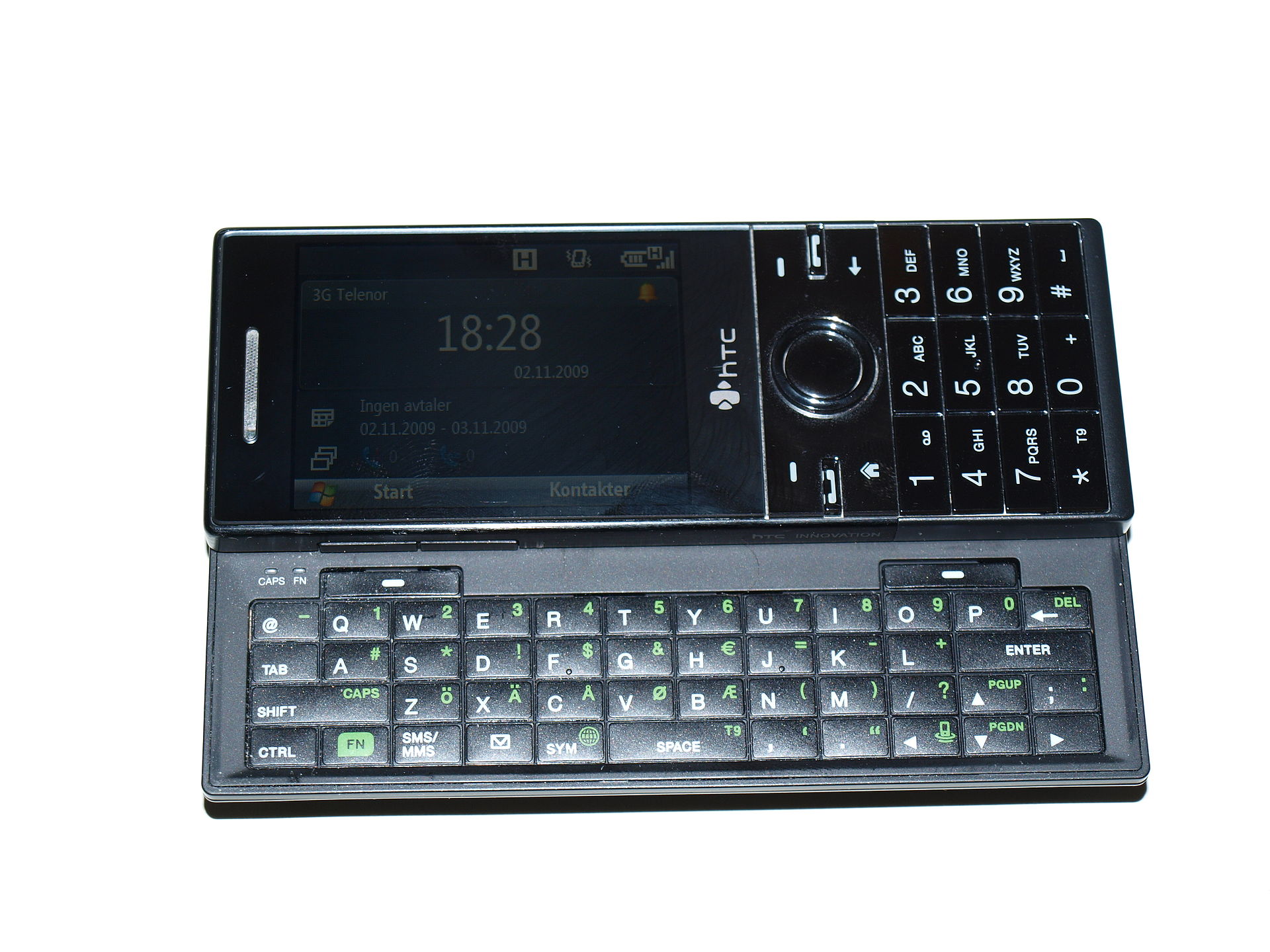
In October 2007, BlackBerry released one of its first smartphones aimed not at the corporate segment, but at ordinary users. The BlackBerry Pearl 8120 smartphone received a simplified keyboard - perhaps it can be called a “semi-QWERTY”, a 2 megapixel camera and Wi-Fi support. The color LCD display had a resolution of 240x260 pixels.
The internal memory of 64 megabytes could be increased using microSD.
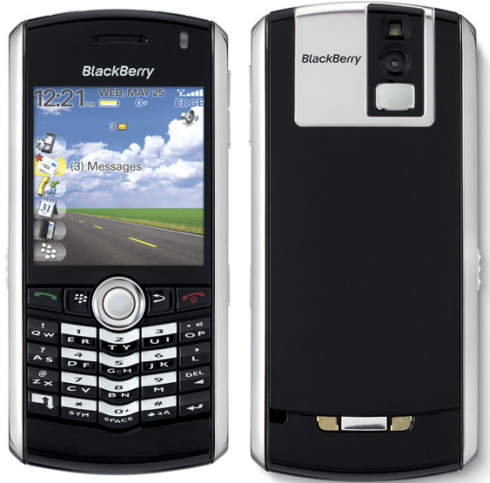
The BlackBerry Bold 9000 smartphone received a 2.6-inch display (non-touch) with a resolution of 460x320 pixels, a 2-megapixel camera and a 624 MHz processor. RAM - 128 megabytes, and built-in - a whole gigabyte. It was the first RIM smartphone with GPS. The device was announced on May 12, 2008, and started selling on July 9, 2008.
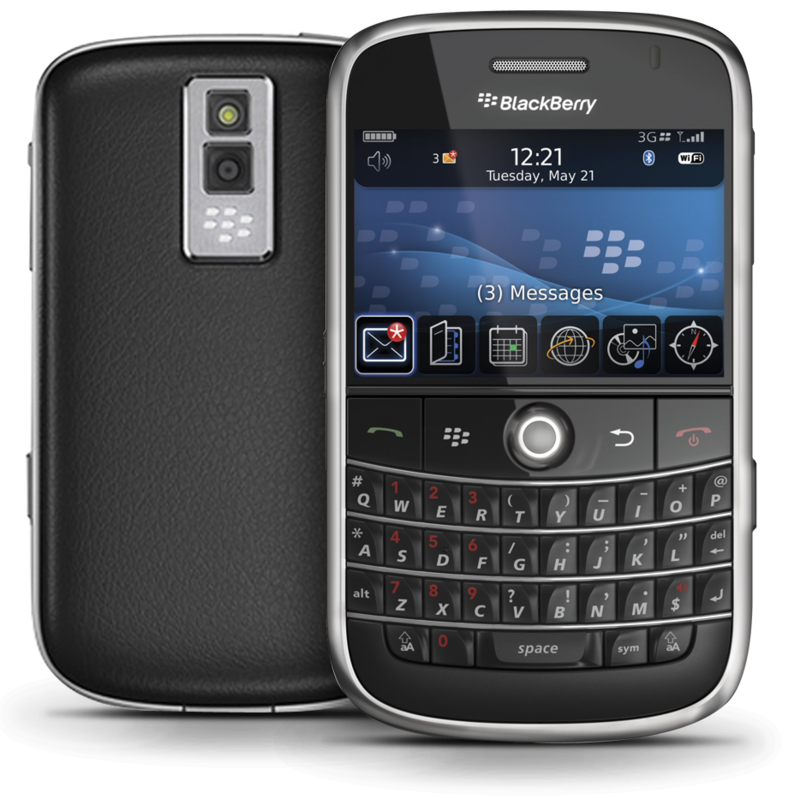
On June 10, 2008, Apple introduced the iPhone 3G , an improved model in which the company tried to get rid of the jambs of the first version - for example, now the device was connected to 3G networks.
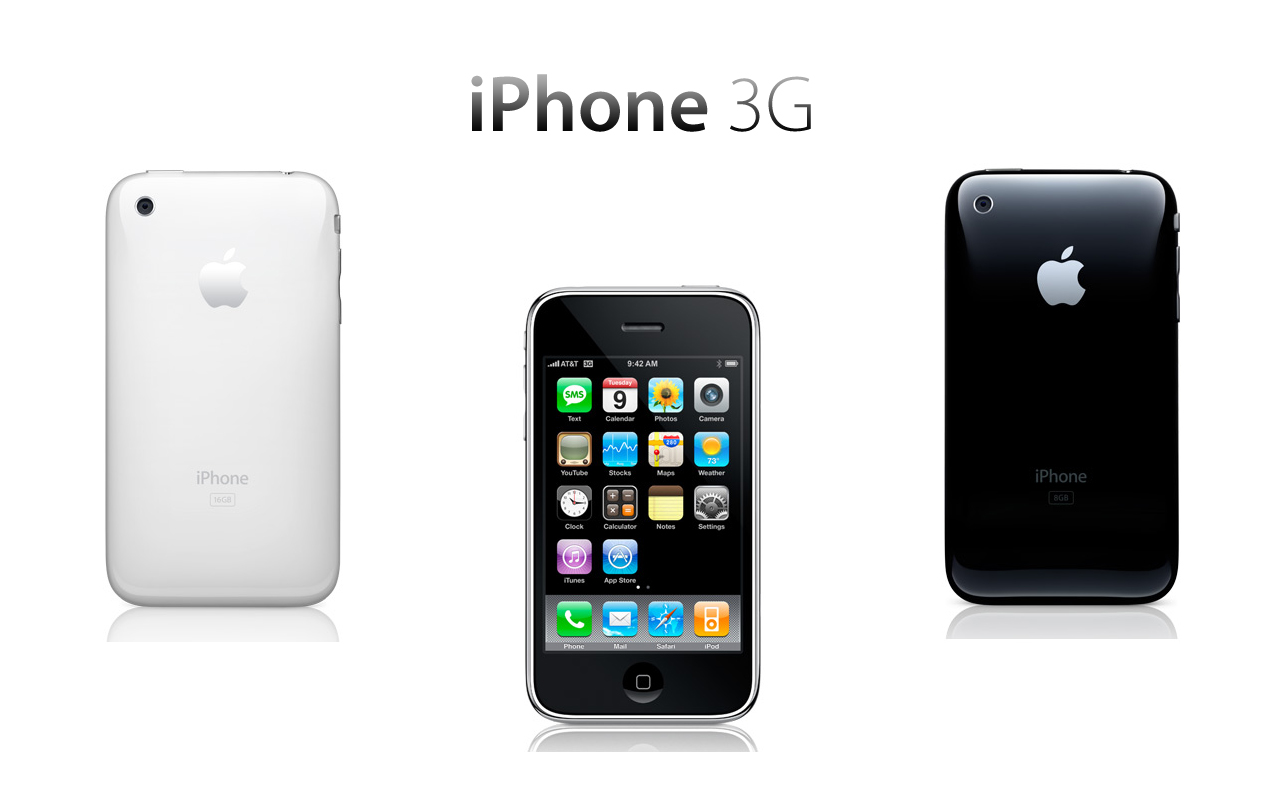
Sales of HTC Dream, HTC's first Android device, began in April 2009. For the first time, photos of this GooglePhone and iPhone killer appeared online in September 2008. The smartphone received a qwerty-keyboard, a 3-megapixel camera and a 3.5-inch touch screen.
A year after the release of the smartphone, Apple accused HTC of violating 20 patents and prepared more than 700 pages with a description of the claims:
A Taiwanese company gave a logical answer to this press release declaring HTC war :
The list of devices that allegedly infringed Apple's patents included Nexus One, Touch Pro, Touch Diamond, Touch Pro2, Tilt II, Pure, Imagio, Dream / G1, myTouch 3G, Hero, HD2 and Droid Eris. And this can be called recognition from Apple.
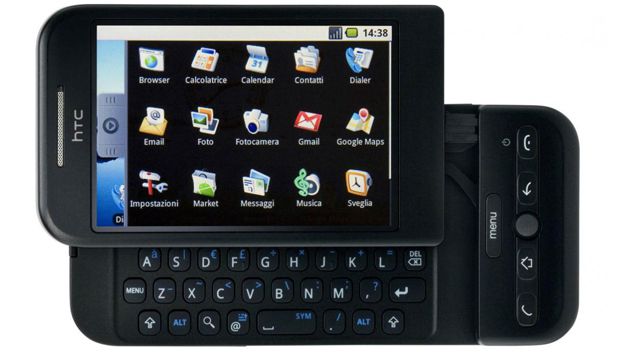

The first smartphone in the Galaxy line, the Korean company Samsung announced on April 27, 2009, a few days after the start of sales of HTC Dream. A tiny 3.2-inch AMOLED screen, a 5-megapixel camera with autofocus and LED flash, a 3.5 mm headphone jack, a set of pre-installed applications from Google, 8 GB of internal memory, a 1500 mAh battery - this is what Samsung Galaxy could boast of i7500. Read the review here .
Russian commercial - filmed in one take.
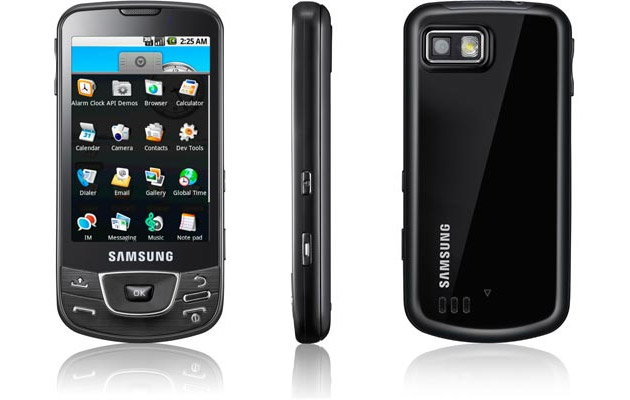
The second HTC Android phone - HTC Magic - was released in April 2009, and demonstrated in February of that year at the Mobile World Congress. Smartphone review read here . Pay attention to the insert around the camera.

In 2008, BlackBerry released its first smartphone with a touch screen and without a QWERTY keyboard. The gadget was introduced in September, and released in November 2008. The device received a display with a diagonal of 3.25 inches and a resolution of 360x480 pixels. Processor - Qualcomm MSM7600 528 MHz. Again, the gadget had 128 megabytes of RAM. Built-in - 1 gigabyte, and there was microSD support up to 16 GB.
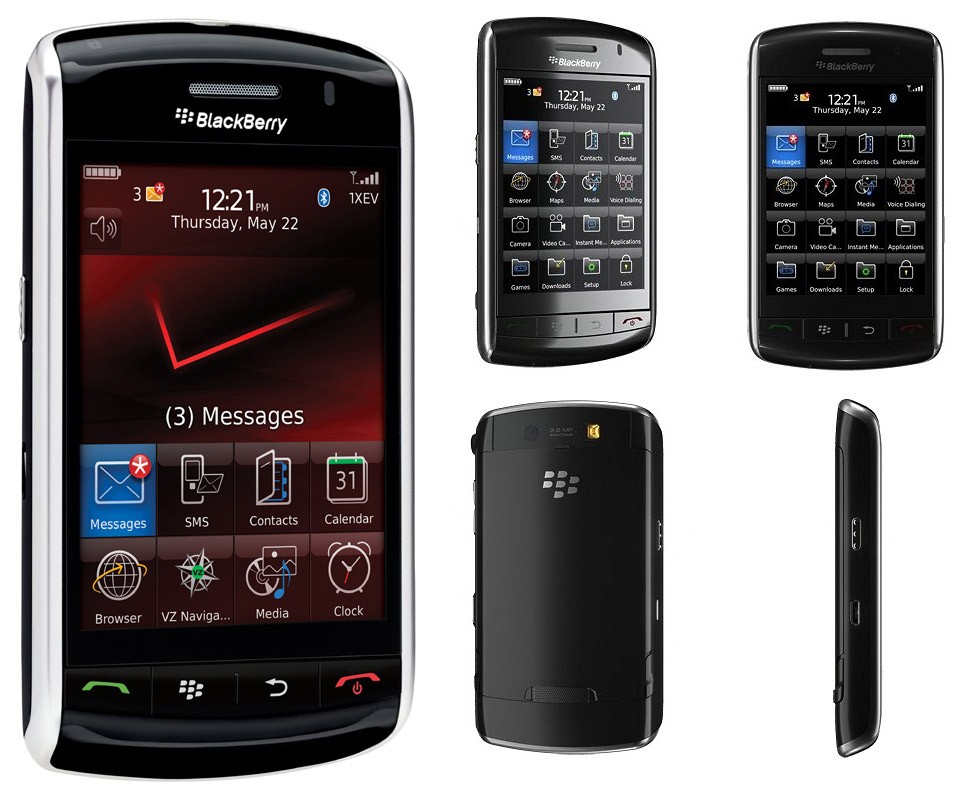
The Nokia 5800 smartphone was introduced in October 2008. The device had a 3.2-inch screen with a resolution of 640x360 pixels. Processor Freescale MXC300-30 ARM11 434 MHz, 128 megabytes of RAM. Included with the gadget was microSD 8 gigabytes.
The main camera of 3.2 megapixels received Carl Zeiss optics, autofocus and LED flash.
On June 8, 2009, at the WWDC in San Francisco, Apple revealed the iPhone 3GS with the updated iPhone OS 3.0. A 3.5-inch LCD display with a resolution of 320x480 pixels was developed by Apple, produced by LG. The processor is designed and manufactured by the Korean competitor Samsung S5PC100 ARM 833 MHz, but the hardware frequency is reduced to 600 MHz. Camera - 3 megapixels. RAM - 256 MB, internal - 16 or 32 GB. The device received support for HSDPA communication.
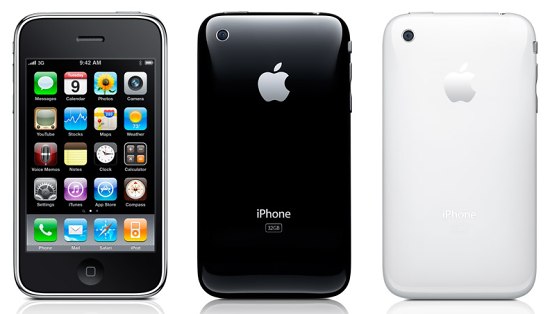

HTC Hero appeared on sale in July 2009, in Russia - in September. This was the third HTC smartphone on the Android operating system. And the first Android smartphone to support Adobe Flash.
The review is on Geektimes - read the link .
What about the technical specifications - Hero had 256 megabytes of flash memory and 288 megabytes of RAM. Processor - Qualcomm MSM7600A ARM11 528 MHz or MSM7200A ARM11 528 MHz.
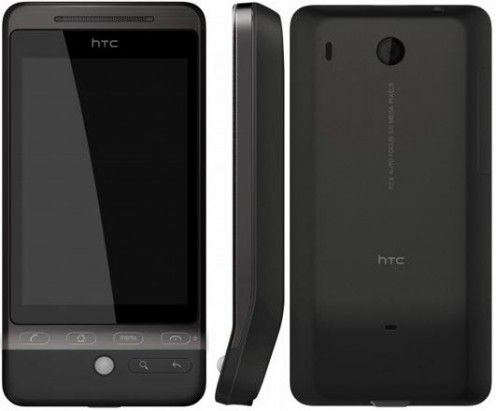
The HTC Evo 4G is the first Android device with WiMAX support.
The device on Qualcomm QSD8650 1 GHz processor received 576 megabytes of RAM and 1 gigabyte of internal memory, a 4.3-inch screen with a resolution of 480x800 pixels and an 8-megapixel camera.
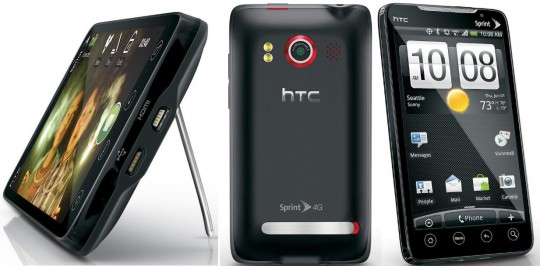
In October 2009, Motorola launched the Droid smartphone, an Android slider with a QWERTY keyboard. The device worked with Wi-Fi networks, had a 3.7-inch display with a resolution of 854x480, supported microSD cards up to 16 gigabytes. Processor - Texas Instruments OMAP 3430. Internal memory - 512 megabytes, operational - 256 megabytes.
This is the first smartphone to ship with the free Google Maps Navigation app.
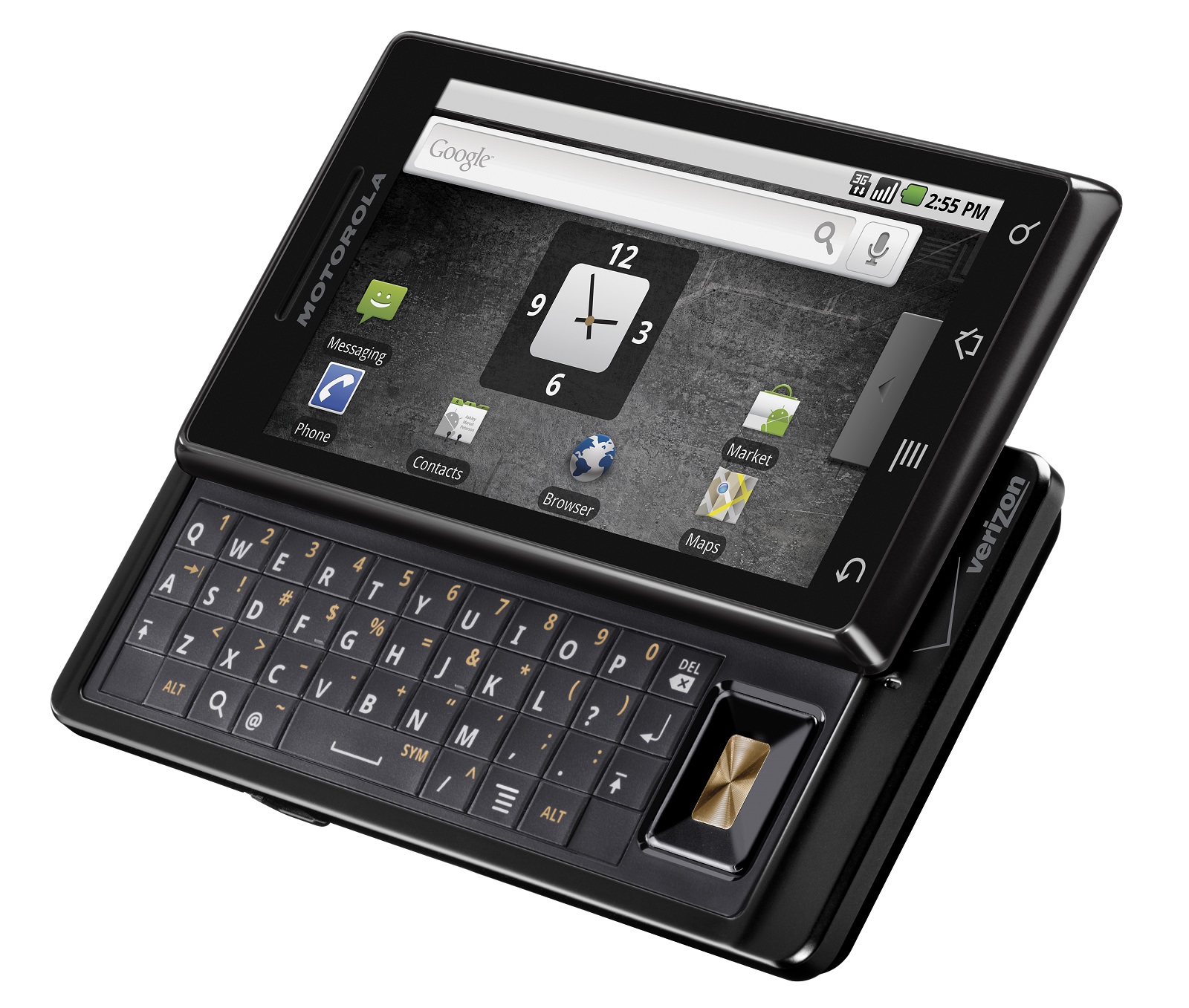
As of July 2010, the Motorola Droid was the most popular Android device. And the second, third, fourth, fifth, eighth and ninth places in this ranking were occupied by HTC devices.
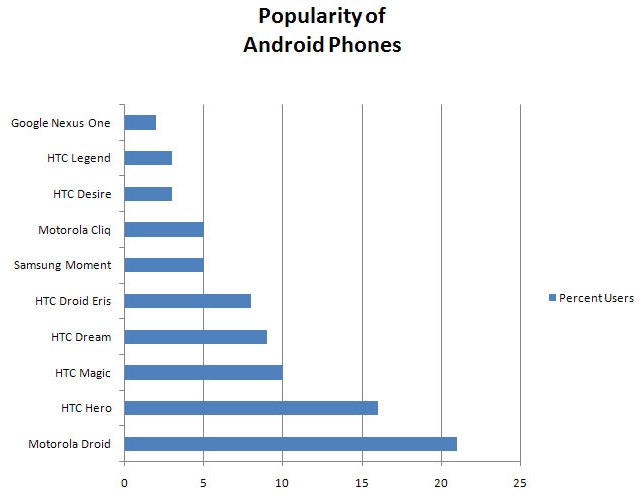
In November 2009, HTC released the Leo (HD2). This is a smartphone running the Windows Mobile operating system, with a 5-megapixel camera with autofocus, a 4.3-inch TFT-display with a resolution of 480x800 pixels. Qualcomm Snapdragon QSD8250 processor 1 GHz, 512 megabytes of internal and 488 megabytes of RAM. HTC Leo - the first smartphone with a capacitive screen on the operating system from Microsoft.
Surprisingly, in the smartphone’s review on Geektimes, the following phrases slipped: “Lies in the hand like a glove, but for people with small palms it is unlikely that the phone will be convenient to use with one hand” and “However, it is more designed for men, with big palms and fingers.” Let me remind you that the display is 4.3 inches. Now some of my friends girls go with the Asus 5.5 inches and are very pleased with its size.
Other reviews wrote "HD2 is really huge." I look at my Lenovo Phab Plus and wonder.
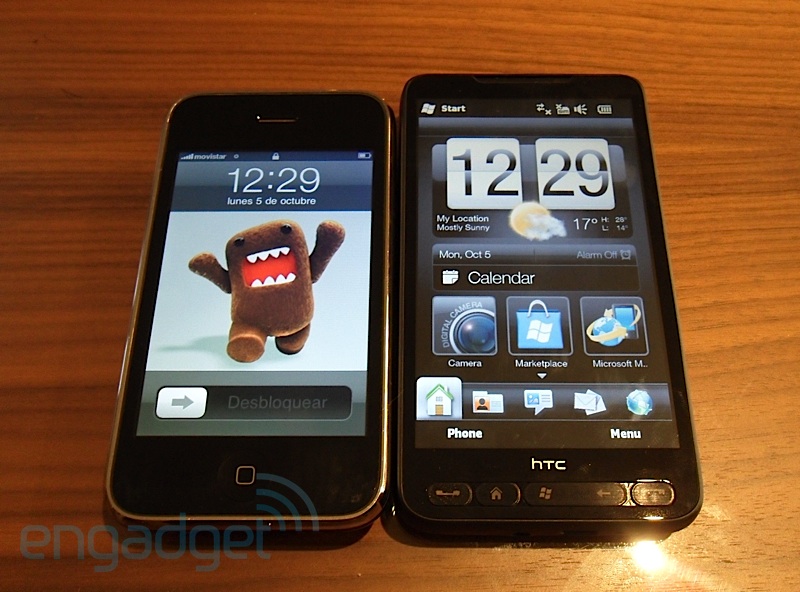
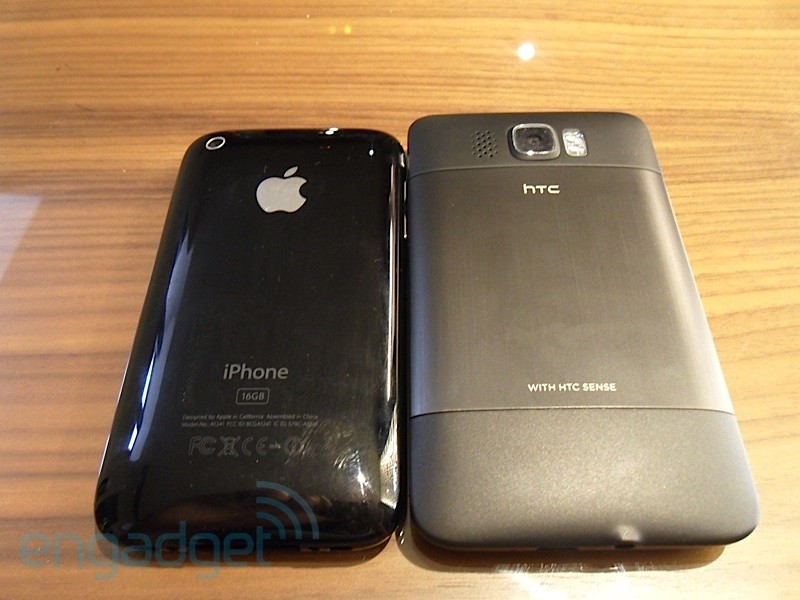

In November 2009, Nokia released the "Internet tablet" Nokia N900, announced on September 2 at Nokia World. A slider with a QWERTY keyboard on Maemo received 256 megabytes of RAM and 32 GB of flash memory, a microSD slot for up to 32 GB, a 5 megapixel camera, a 3.5-inch screen with a resolution of 800x480 pixels.
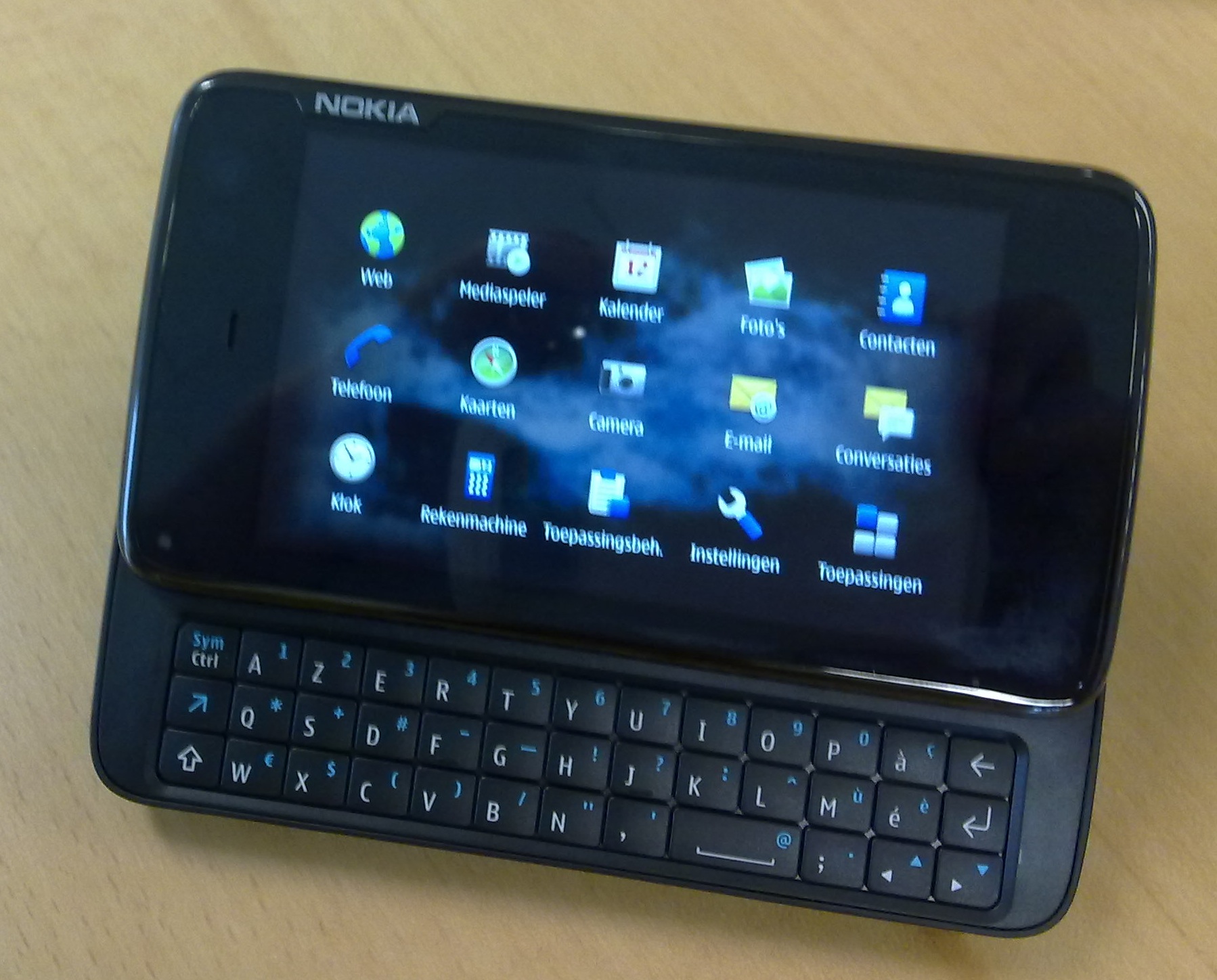
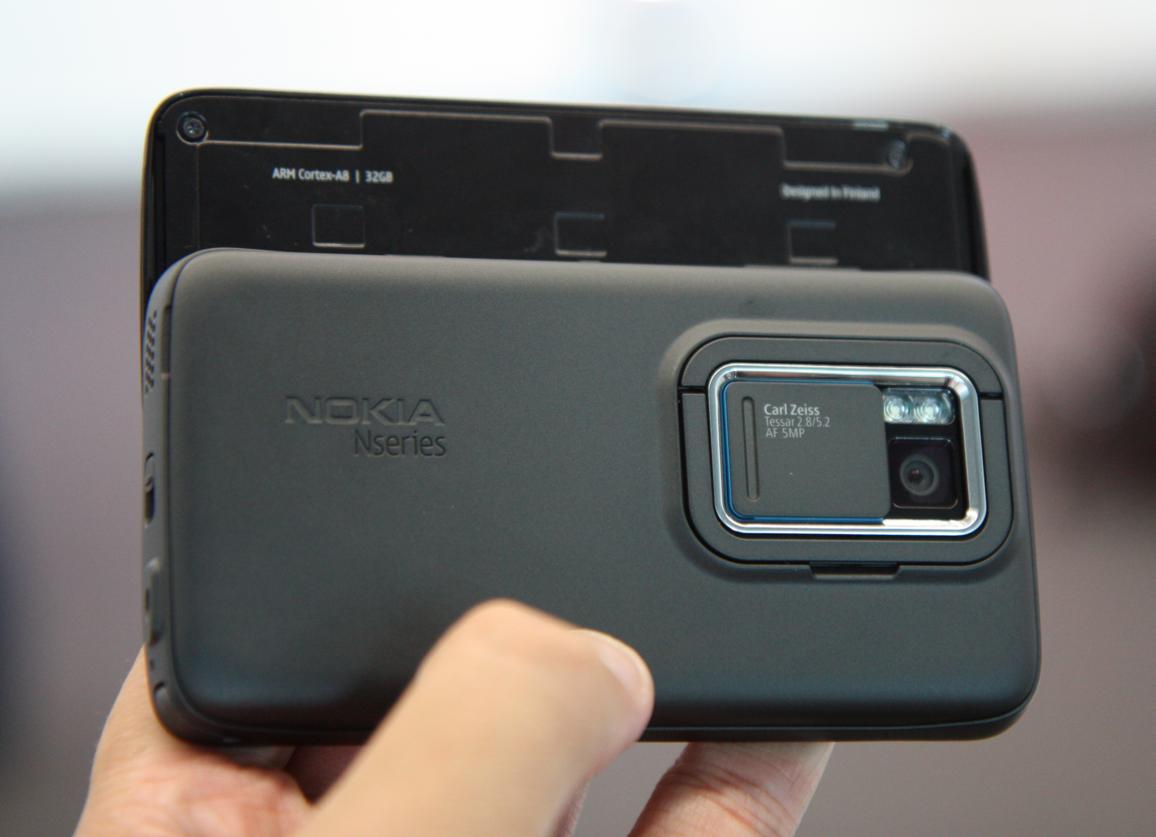
January 7, 2010 Lenovo introduced the smartphone on Android - LePhone. The device received a 3.7-inch display with a resolution of 800x480, a Snapdragon processor 1 GHz, 8 GB of internal memory. An external QWERTY keyboard, speakers and battery can be connected to the gadget. The device was initially aimed at the Chinese market.
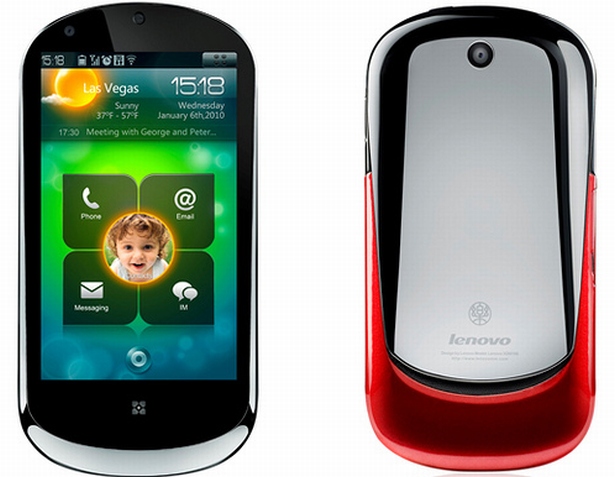

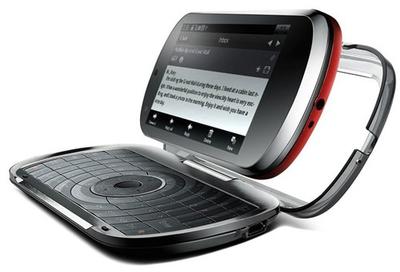
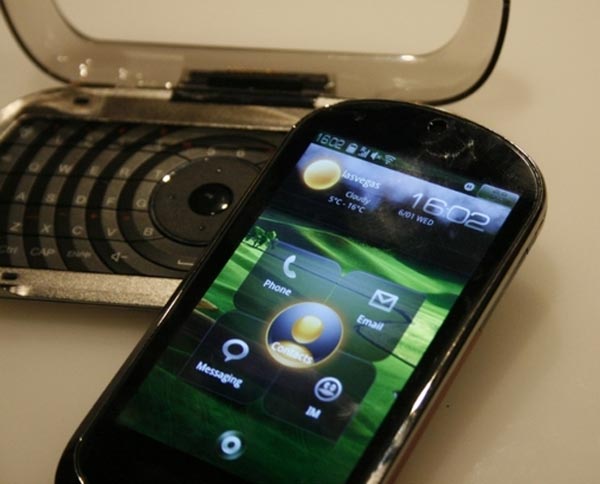
On March 1, 2010, HTC began selling HTC Legend for as low as $ 750. The device boasted a 3.2-inch AMOLED display, Android 2.2 operating system, Qualcomm 7227 600 MHz processor, as many as 384 megabytes of RAM and 512 MB of internal memory. But the memory could be expanded due to microSD up to 32 GB. Read the review , remember how it was.
Although the Legend case was made of a single piece of aluminum, this did not affect the quality of signal reception, unlike the iPhone 4, in which the signal level fell several times as soon as it was taken in hand .
The back panel is decorated with plastic inserts.

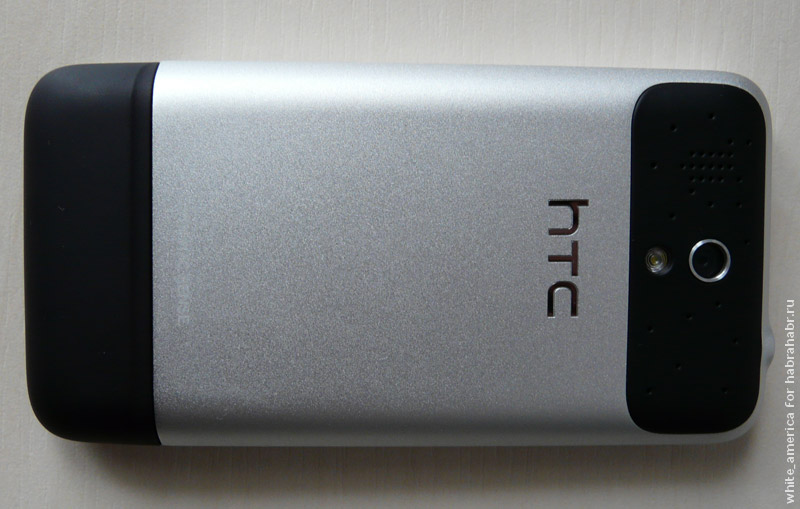
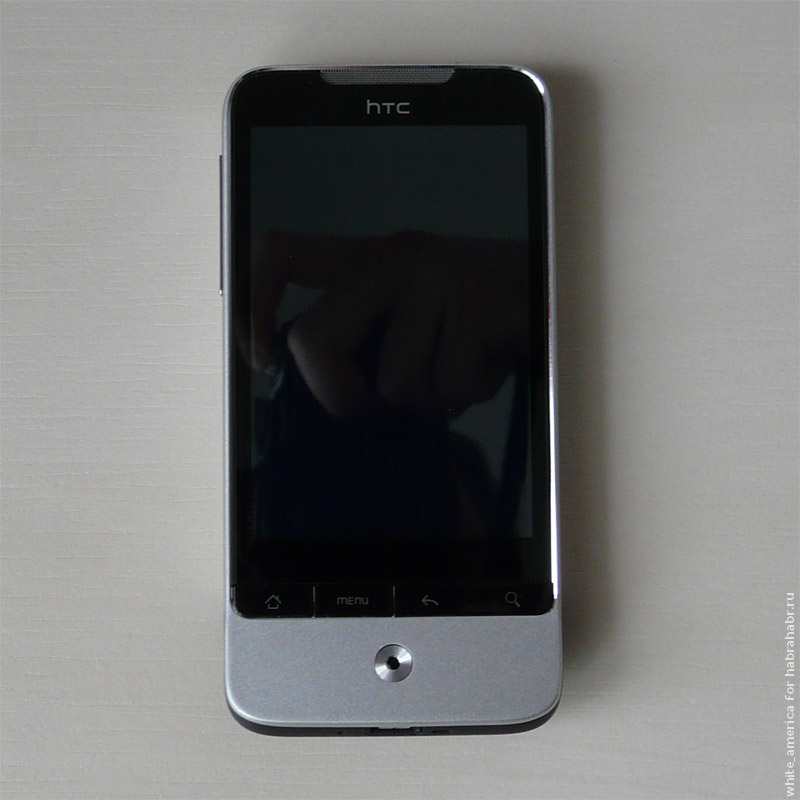
Samsung Galaxy S was released in June 2010, and in just two months they sold 800 thousand devices - an absolute record at that time for Android smartphones. The device received a 4-inch AMOLED screen of 480x800 pixels, a 1 GHz ARM Cortex A8 processor, 512 MB of RAM and 2 to 16 GB of internal memory with support for memory cards up to 32 GB. This is one of the first smartphones to support Bluetooth 3.0. The device is 9.9 mm thick; it was one of the thinnest smartphones in the class. Cameras - 5 MP main and 0.3 front.
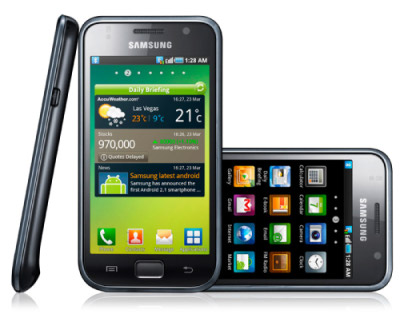
June 7, 2010 Apple released the new iPhone 4 with an industrial design. Read the full review of love and adoration here. The case is made of two pieces of polished reinforced glass and a stainless steel frame, which caused problems with signal reception - moreover, they were predicted before the device went on sale.

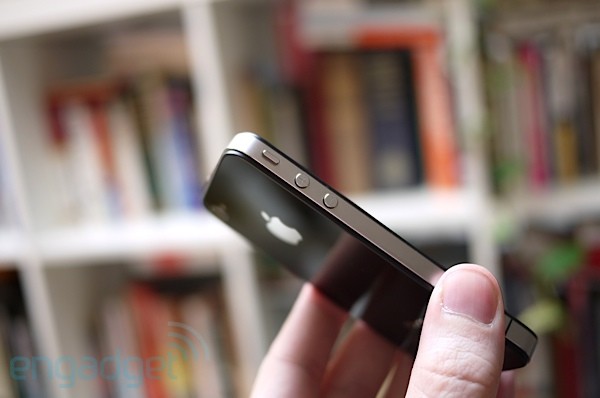
Apple's official answer:
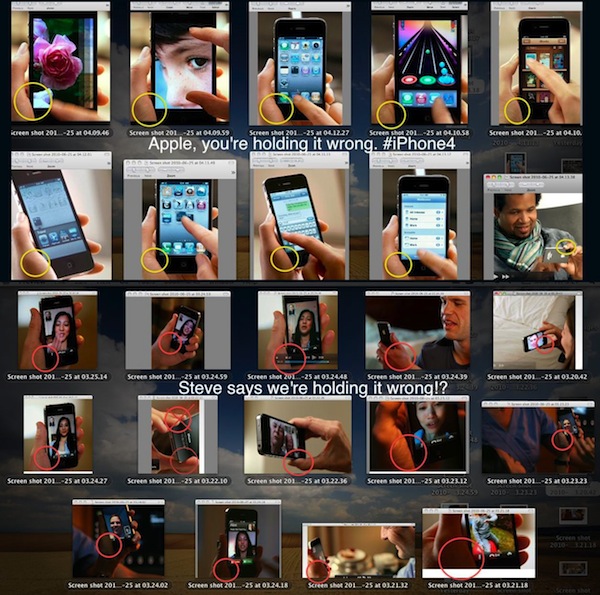
IDC September 7, 2010 publishes a report with a forecast of smartphone sales in 2010 by 55% compared with 2009. And it says that by 2014 Android will occupy 24.6% of the smartphone market, Symbian - 32.9%, Blackberry - 17.3%, and iOS - 10.9%. Windows Mobile will have 9.6%.
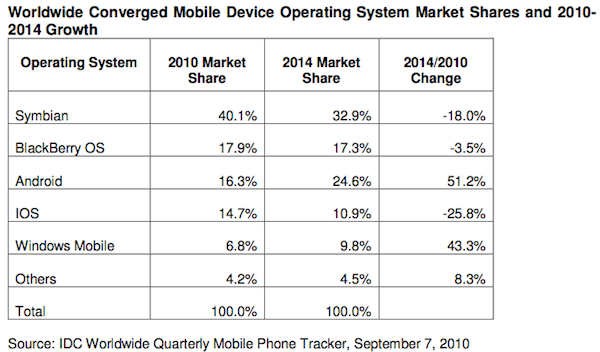
If we look briefly in 2014, we will see how badly IDC analysts were mistaken in 2010. Android occupied 84.8% of the market, iOS - 11.6%, Windows Phone - 2.5%. And Blackberry got only 0.5%.


But this time I want to track precisely smartphones - communicators, smart phones, phablets, shades and other devices of the same type, the mere definition of the name of which caused fights among geeks. And so you need to start with IBM Simon, released more than 20 years ago . Then we move on to Symbian devices, the first iPhone and HTC’s first Android smartphone, recall Nokia devices and end the journey with the latest gadgets introduced in 2016.
In the comments, please share your memories and provide links to your own reviews.
If the article lacks a specific model, please write about it in the comments with the image. So we will make the “Evolution” more complete.
Ibm simon
IBM Simon had a large 4.7-inch monochrome display with a resolution of 160x293 pixels, and weighed a pound without taking into account the docking station. This futuristic for that time mixture of a computer and a phone without a keyboard, but with a touch screen, combined a mobile phone, pager, organizer, mail, alarm clock. The gadget worked on a 16-bit Vadem VG-230 16 MHz processor. By the way, there was a whole megabyte of RAM. Want to see what's inside? Read analysis on Habré , and in a post on Geektimes read how pictures can be uploaded to this gadget.



The film "Network", 1995.
Nokia 9000 Communicator
Could you not have dreamed about this device from Nokia in 1996? He had a keyboard and two monochrome displays - an internal 4.5-inch 640x200 pixels, external - 50x38. Weighed the gadget 397 grams - you could fight off anyone.
For the first time, the device was called the “Communicator."

Ericsson R380
We turn to the first device, which was called "smart phone" as part of the manufacturer’s advertising campaign. This is Ericsson R380, another gadget with a large 3.7-inch touch screen and a Symbian operating system. Prior to this, Ericsson made many handheld computers without the ability to make calls and phones without the ability to use them as computers. “We call it a smartphone,” the advertisement says.
The device was introduced to the world in December 1999, and in 2000 began to sell.

Blackberry 5810
The history of Blackberry began in 1984 when a student at the University of Waterloo, Mike Lazaridis, registered RIM - Research In Motion. The company began by designing devices for wireless data transmission, and from the 1990s borrowed text messaging technology from paging networks from Ericsson and RAM Mobile Data, after which it released a pager with a QWERTY keyboard that allows you to send messages. Further, most of the Blackberry devices looked just like that.

The first Blackberry smartphone appeared in 2002. The BlackBerry 5810 did not have a speaker and a microphone; a headset was needed for talking. But there was a keyboard.

Nokia 9210
Nokia 9210 continued the line of “communicators” from the Finnish company. We released the gadget on Symbian OS 6.0 in 2002, but I still remember how I wanted to get one. And I don’t know what would I do with him?
Nokia 9210 boasted a color screen of 640x200 pixels, 8 MB of RAM and 14 MB of internal memory. He did not work long then - 10 hours. The review is here .


Nokia 7650
Nokia 7650, announced on June 26, 2002, was the first smartphone on Symbian OS - before that there were only communicators. Here you can start arguing about what should be called.
The device in the media dubbed the "camera phone" for the built-in camera, and it generally became the first device from Nokia with a camera.
The processor is a 32-bit RISC 104 MHz. Memory - 4 megabytes, of which only 3.4 MB was available to the user.

Sony Ericsson P800
In 2002, Sony Ericsson introduced the P800 smartphone with UIQ 2.0 interface, made on the basis of Symbian OS v 7.0.

HTC Wallaby
Since April 2002, HTC has been manufacturing handheld personal computers running Windows Mobile. The first was HTC Wallaby with an Intel StrongARM processor of 206 MHz, 32 MB of RAM and the same amount of flash memory, support for MMC and SD cards, a 3.5-inch TFT-display with a resolution of 240x320 pixels ... Operating system - Microsoft Pocket PC 2002 Phone Edition.


A year later, HTC Falcon appeared.
 '
' And in 2004 - HTC Himalaya. This handheld no longer had a huge antenna.

Siemens SX1
In February 2003, the German company Siemens announced the entry into the smartphone market with the original Siemens SX1 on Symbian OS. The number keys are located on both sides of the case. At the time sales began in December 2003, the gadget cost $ 750, but fell in price to 250 in two years.

At the 2005 Hanover exhibition, Siemens demonstrated a new smartphone concept - with a laser keyboard.

Sony Ericsson P910
In 2004, Sony Ericsson P910 came out. The gadget received a QWERTY keyboard on the back of the flip. At the same time, you can remove the flip from the gadget in general to get the classic version of the smartphone with a minimum of buttons. The Symbian model is based on the 156 MHz ARM9 processor, has 64 megabytes of RAM and supports Memory Stick PRO Duo up to 2 gigabytes.

HTC Blueangel
HTC Blueangel went on sale in October 2004. It was made under various brands, including Siemens. The diagonal of the display is 3.5 inches, the memory is 96 MB built-in and 128 MB operational. The device worked on Windows Mobile 2003SE. Processor - Intel PXA263 400 MHz. The gadget is made in the slider form factor with a full-sized keyboard.
Later there were Alpine, Gemini, Apache, Galaxy, Wizard, Prophet, Charmer, Hermes, Trinity and many other devices on the operating system from Microsoft.

Blackberry 7210
The BlackBerry 7210 was the first Blackberry smartphone with a color display. The gadget had 2 megabytes of internal memory and a 960 mAh battery.

HTC Magician
The HTC Qtek S100 smartphone has been sold since 2005 under various names - 2 Xda II Mini (Asia), O2 Xda mini (Germany), T-Mobile MDA compact, i-mate JAM, Vodafone VPA Compact, Dopod 818, Krome Spy, and Orange SPV M500. This device on Windows Mobile 2003 had 64 MB of internal and the same amount of RAM, an SDIO / MMC card slot, a 1.3 megapixel camera, a 2.8-inch screen with a resolution of 240x320 pixels.


Lenovo P930
In 1998, Nokia, Psion, Ericsson and Motorola merged to develop Symbian OS. Later, Sony Ericsson, Siemens, Panasonic, Fujitsu, Samsung, Sony, Sharp and Sanyo joined the consortium. The Symbian platform was the most popular for smartphones in the world in the mid-2000s. Read about Symbian Sunrise and Sunset here .
Lenovo's first gadget on Symbian was the Lenovo P930 in 2005. The device supported GPRS, had a color display with a stylus input and a 1-megapixel camera. The memory could be expanded using SD / MMC memory cards. The smartphone had a GPS navigator, an MP3 player, and it was possible to put JAVA applications on it.

Lenovo ET980
The Lenovo ET980 smartphone on Windows Mobile 5.0 received an Intel PXA270 312 MHz processor. The overlay on the smartphone added ordinary buttons to it. The release of the gadget began in 2005.

Google buys Android
In July 2005, Google acquired Android Inc., in November 2007, announced the creation of the Open Handset Alliance and announced the open Android mobile platform. In the same month, the alliance presents the first version of the package for developers. In 2008, the first version of the operating system was released.
HTC P3600
In September 2006, HTC released the P3600 on Windows Mobile - a 150-gram communicator with a 2.8-inch TFT-display and a resolution of 240x320, two cameras - the main 2 MP and front-facing, 64 MB RAM and 128 MB of internal memory. Samsung for the smartphone produced a processor.

Nokia N95
In March 2007, the Finns released the Nokia N95. The user of Habr called him the King of smartphones , and in the first comment another user expressed his “fi”: “there is no qwerty keyboard, so I won’t even look in his direction.”
The form factor is a brick slider. Display - 2.6-inch 240x320 pixels. The processor with a clock frequency of 330 MHz. Internal memory 160 MB. The camera is 5 megapixel with autofocus, electronic stabilizer and built-in flash. The gadget worked on Symbian OS v9.2.

iPhone
In May 2007, it became known that sales of the Apple iPhone would begin in June. Steve Jobs tried to squeeze the most out of his subordinates so that the device was close to ideal. This has been written more than one book.


HTC S740
The HTC S740 was launched in 2008. It is based on the Qualcomm MSM7225 528 MHz processor, had 256 megabytes of RAM and internal memory, supported microSD. The screen diagonal is 2.4 inches, and the resolution is 320x240 pixels.


BlackBerry Pearl 8120
In October 2007, BlackBerry released one of its first smartphones aimed not at the corporate segment, but at ordinary users. The BlackBerry Pearl 8120 smartphone received a simplified keyboard - perhaps it can be called a “semi-QWERTY”, a 2 megapixel camera and Wi-Fi support. The color LCD display had a resolution of 240x260 pixels.
The internal memory of 64 megabytes could be increased using microSD.

BlackBerry Bold 9000
The BlackBerry Bold 9000 smartphone received a 2.6-inch display (non-touch) with a resolution of 460x320 pixels, a 2-megapixel camera and a 624 MHz processor. RAM - 128 megabytes, and built-in - a whole gigabyte. It was the first RIM smartphone with GPS. The device was announced on May 12, 2008, and started selling on July 9, 2008.

iPhone 3G
On June 10, 2008, Apple introduced the iPhone 3G , an improved model in which the company tried to get rid of the jambs of the first version - for example, now the device was connected to 3G networks.

HTC Dream
Sales of HTC Dream, HTC's first Android device, began in April 2009. For the first time, photos of this GooglePhone and iPhone killer appeared online in September 2008. The smartphone received a qwerty-keyboard, a 3-megapixel camera and a 3.5-inch touch screen.
A year after the release of the smartphone, Apple accused HTC of violating 20 patents and prepared more than 700 pages with a description of the claims:
We can sit and watch how competitors steal our patented inventions, or we can do something about it. We decided to take action. We believe that the competition in the market is healthy, but competitors should create their own unique technologies, and not steal ours.
A Taiwanese company gave a logical answer to this press release declaring HTC war :
We just became aware of Apple’s intentions from the press release. A court document has not yet been handed in, so we cannot comment on the charges so far. We respect the value of patent rights, but we also want to protect our own innovations. We invent and patent our own technologies for over 13 years.
The list of devices that allegedly infringed Apple's patents included Nexus One, Touch Pro, Touch Diamond, Touch Pro2, Tilt II, Pure, Imagio, Dream / G1, myTouch 3G, Hero, HD2 and Droid Eris. And this can be called recognition from Apple.


Samsung Galaxy
The first smartphone in the Galaxy line, the Korean company Samsung announced on April 27, 2009, a few days after the start of sales of HTC Dream. A tiny 3.2-inch AMOLED screen, a 5-megapixel camera with autofocus and LED flash, a 3.5 mm headphone jack, a set of pre-installed applications from Google, 8 GB of internal memory, a 1500 mAh battery - this is what Samsung Galaxy could boast of i7500. Read the review here .
Russian commercial - filmed in one take.

HTC Magic
The second HTC Android phone - HTC Magic - was released in April 2009, and demonstrated in February of that year at the Mobile World Congress. Smartphone review read here . Pay attention to the insert around the camera.

BlackBerry Storm 9500
In 2008, BlackBerry released its first smartphone with a touch screen and without a QWERTY keyboard. The gadget was introduced in September, and released in November 2008. The device received a display with a diagonal of 3.25 inches and a resolution of 360x480 pixels. Processor - Qualcomm MSM7600 528 MHz. Again, the gadget had 128 megabytes of RAM. Built-in - 1 gigabyte, and there was microSD support up to 16 GB.

Nokia 5800 XpressMusic
The Nokia 5800 smartphone was introduced in October 2008. The device had a 3.2-inch screen with a resolution of 640x360 pixels. Processor Freescale MXC300-30 ARM11 434 MHz, 128 megabytes of RAM. Included with the gadget was microSD 8 gigabytes.
The main camera of 3.2 megapixels received Carl Zeiss optics, autofocus and LED flash.
iPhone 3GS
On June 8, 2009, at the WWDC in San Francisco, Apple revealed the iPhone 3GS with the updated iPhone OS 3.0. A 3.5-inch LCD display with a resolution of 320x480 pixels was developed by Apple, produced by LG. The processor is designed and manufactured by the Korean competitor Samsung S5PC100 ARM 833 MHz, but the hardware frequency is reduced to 600 MHz. Camera - 3 megapixels. RAM - 256 MB, internal - 16 or 32 GB. The device received support for HSDPA communication.


HTC Hero
HTC Hero appeared on sale in July 2009, in Russia - in September. This was the third HTC smartphone on the Android operating system. And the first Android smartphone to support Adobe Flash.
The review is on Geektimes - read the link .
What about the technical specifications - Hero had 256 megabytes of flash memory and 288 megabytes of RAM. Processor - Qualcomm MSM7600A ARM11 528 MHz or MSM7200A ARM11 528 MHz.

HTC Evo 4G
The HTC Evo 4G is the first Android device with WiMAX support.
The device on Qualcomm QSD8650 1 GHz processor received 576 megabytes of RAM and 1 gigabyte of internal memory, a 4.3-inch screen with a resolution of 480x800 pixels and an 8-megapixel camera.

Motorola Droid
In October 2009, Motorola launched the Droid smartphone, an Android slider with a QWERTY keyboard. The device worked with Wi-Fi networks, had a 3.7-inch display with a resolution of 854x480, supported microSD cards up to 16 gigabytes. Processor - Texas Instruments OMAP 3430. Internal memory - 512 megabytes, operational - 256 megabytes.
This is the first smartphone to ship with the free Google Maps Navigation app.

As of July 2010, the Motorola Droid was the most popular Android device. And the second, third, fourth, fifth, eighth and ninth places in this ranking were occupied by HTC devices.

HTC HD2
In November 2009, HTC released the Leo (HD2). This is a smartphone running the Windows Mobile operating system, with a 5-megapixel camera with autofocus, a 4.3-inch TFT-display with a resolution of 480x800 pixels. Qualcomm Snapdragon QSD8250 processor 1 GHz, 512 megabytes of internal and 488 megabytes of RAM. HTC Leo - the first smartphone with a capacitive screen on the operating system from Microsoft.
Surprisingly, in the smartphone’s review on Geektimes, the following phrases slipped: “Lies in the hand like a glove, but for people with small palms it is unlikely that the phone will be convenient to use with one hand” and “However, it is more designed for men, with big palms and fingers.” Let me remind you that the display is 4.3 inches. Now some of my friends girls go with the Asus 5.5 inches and are very pleased with its size.
Other reviews wrote "HD2 is really huge." I look at my Lenovo Phab Plus and wonder.



Nokia N900
In November 2009, Nokia released the "Internet tablet" Nokia N900, announced on September 2 at Nokia World. A slider with a QWERTY keyboard on Maemo received 256 megabytes of RAM and 32 GB of flash memory, a microSD slot for up to 32 GB, a 5 megapixel camera, a 3.5-inch screen with a resolution of 800x480 pixels.


Lenovo LePhone
January 7, 2010 Lenovo introduced the smartphone on Android - LePhone. The device received a 3.7-inch display with a resolution of 800x480, a Snapdragon processor 1 GHz, 8 GB of internal memory. An external QWERTY keyboard, speakers and battery can be connected to the gadget. The device was initially aimed at the Chinese market.




HTC Legend
On March 1, 2010, HTC began selling HTC Legend for as low as $ 750. The device boasted a 3.2-inch AMOLED display, Android 2.2 operating system, Qualcomm 7227 600 MHz processor, as many as 384 megabytes of RAM and 512 MB of internal memory. But the memory could be expanded due to microSD up to 32 GB. Read the review , remember how it was.
Although the Legend case was made of a single piece of aluminum, this did not affect the quality of signal reception, unlike the iPhone 4, in which the signal level fell several times as soon as it was taken in hand .
The back panel is decorated with plastic inserts.



Samsung Galaxy S
Samsung Galaxy S was released in June 2010, and in just two months they sold 800 thousand devices - an absolute record at that time for Android smartphones. The device received a 4-inch AMOLED screen of 480x800 pixels, a 1 GHz ARM Cortex A8 processor, 512 MB of RAM and 2 to 16 GB of internal memory with support for memory cards up to 32 GB. This is one of the first smartphones to support Bluetooth 3.0. The device is 9.9 mm thick; it was one of the thinnest smartphones in the class. Cameras - 5 MP main and 0.3 front.

iPhone 4
June 7, 2010 Apple released the new iPhone 4 with an industrial design. Read the full review of love and adoration here. The case is made of two pieces of polished reinforced glass and a stainless steel frame, which caused problems with signal reception - moreover, they were predicted before the device went on sale.


Apple's official answer:
Если вы возьмете в руку любой мобильный телефон, это скажется на работе его антенны. Причём, в зависимости от расположения антенн, в некоторых местах корпуса это будет заметно сильнее. Это правда жизни для любого беспроводного телефона. Если вы когда-либо сталкивались с этим на вашем iPhone 4, избегайте обхватывания его за левый нижний таким образом, что ваша рука рука касается обоих частей металлического канта. Или попросту используйте один из многочисленных чехлов.

Прогноз IDC
IDC September 7, 2010 publishes a report with a forecast of smartphone sales in 2010 by 55% compared with 2009. And it says that by 2014 Android will occupy 24.6% of the smartphone market, Symbian - 32.9%, Blackberry - 17.3%, and iOS - 10.9%. Windows Mobile will have 9.6%.

If we look briefly in 2014, we will see how badly IDC analysts were mistaken in 2010. Android occupied 84.8% of the market, iOS - 11.6%, Windows Phone - 2.5%. And Blackberry got only 0.5%.


